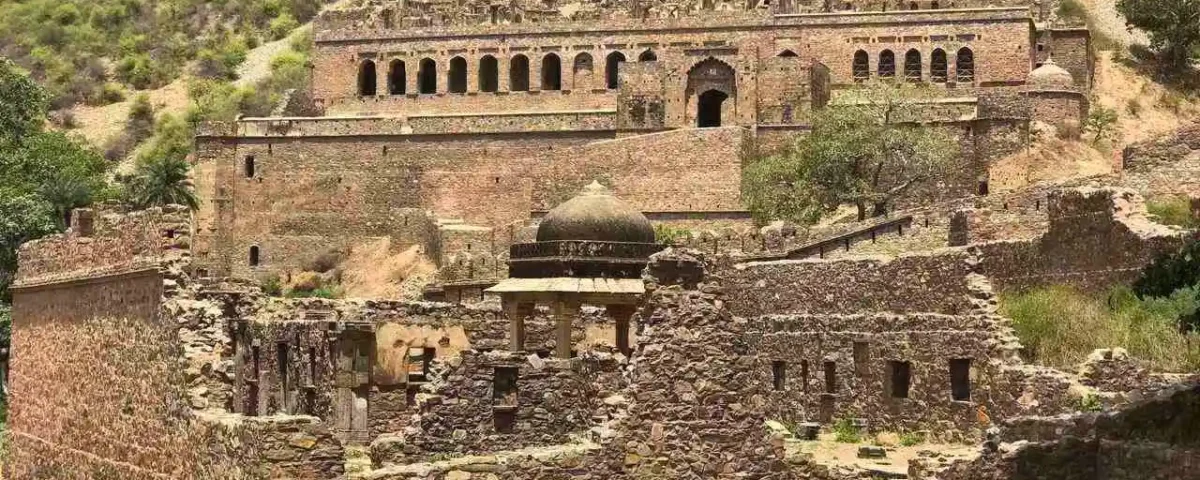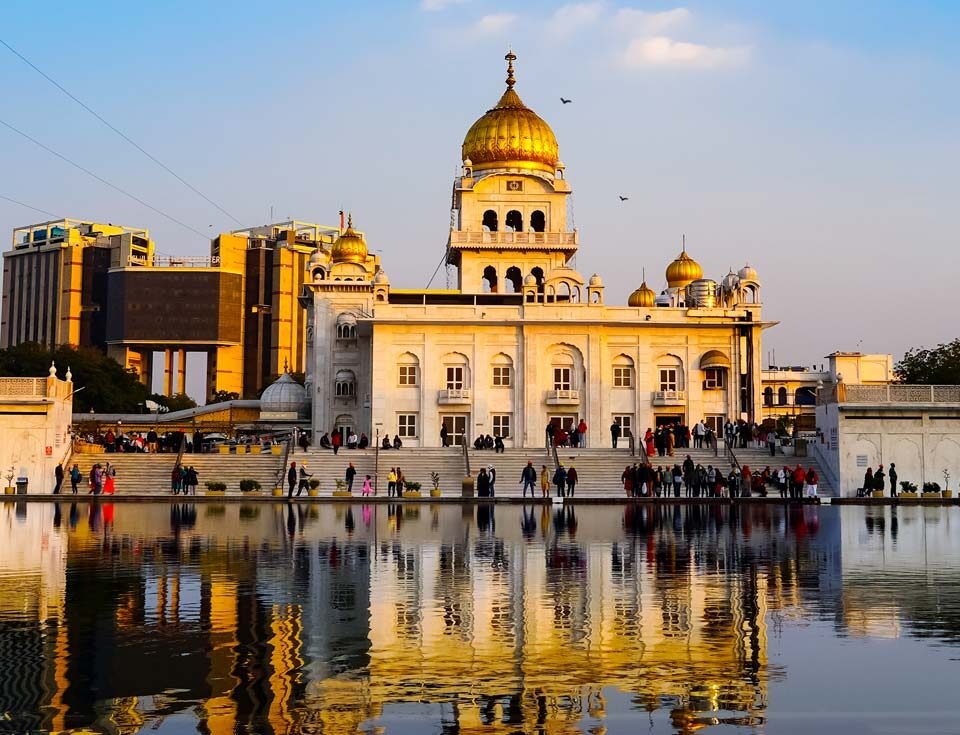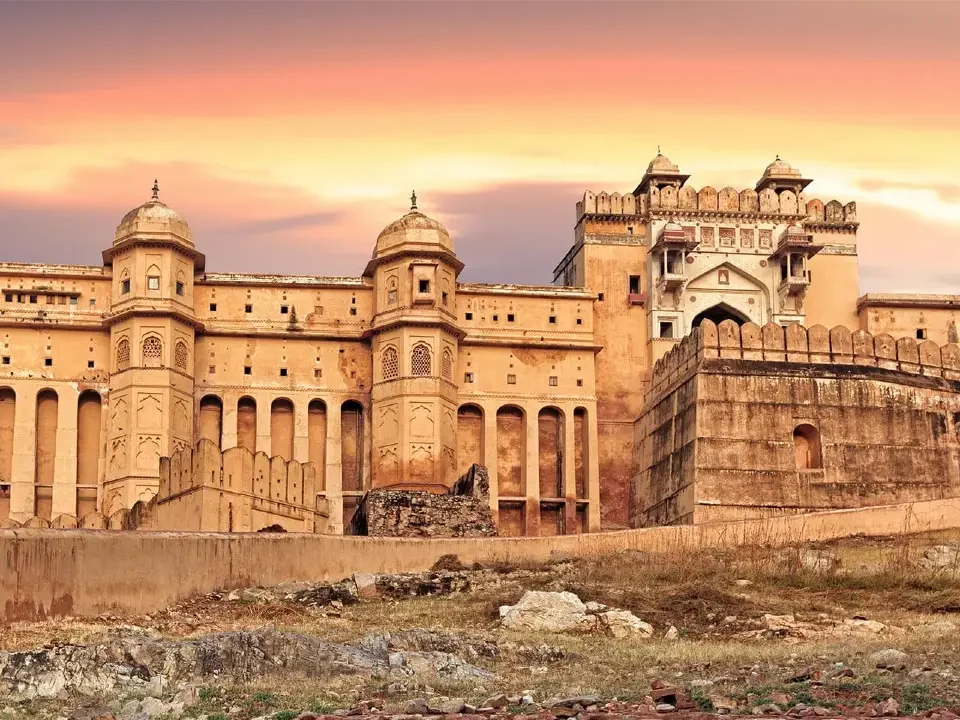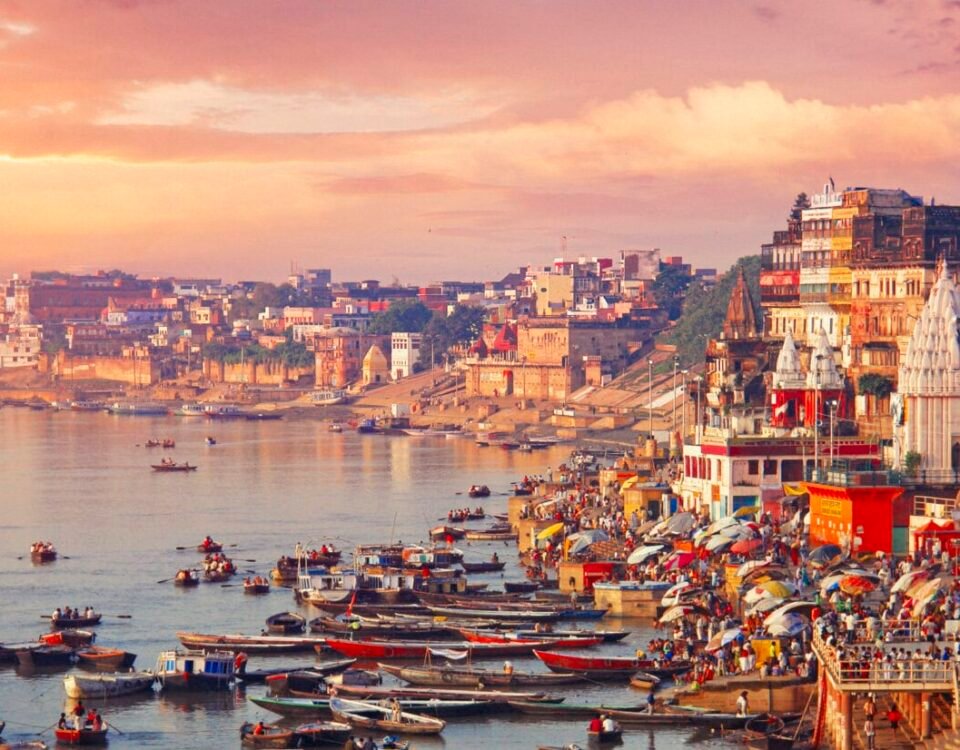Bhangarh Fort: Haunted Stories, History, and the Ghostly Legend of Rajasthan’s Most Mysterious Fort

Taj Mahal Uncovered: History, Architecture, and Timeless Significance of India’s Iconic Monument
July 10, 2025
Jaisalmer Fort: History, Timings, and Why India’s Golden Living Fort Still Stands Tall
July 14, 2025Introduction to Bhangarh Fort
Tucked away at the edge of the Sariska Tiger Reserve in Alwar, Rajasthan, Bhangarh Fort stands as one of India’s most mysterious and talked-about historical sites. Built in the 17th century by Raja Madho Singh, the fort once thrived as a fortified town of temples, palaces, and markets. Today, it lies in eerie ruins, visited more for its spine-chilling reputation than its architectural beauty.
What truly sets Bhangarh Fort apart is the air of supernatural dread that surrounds it. Locals and travelers often refer to it as the ghost fort in Rajasthan, a title born from the countless stories of hauntings, cursed love, and unexplained disappearances. Despite its haunting fame, Bhangarh continues to attract history lovers, thrill-seekers, and curious minds, all eager to unravel the truth hidden within its crumbling walls.
Bhangarh Fort History – A Glimpse into the Past
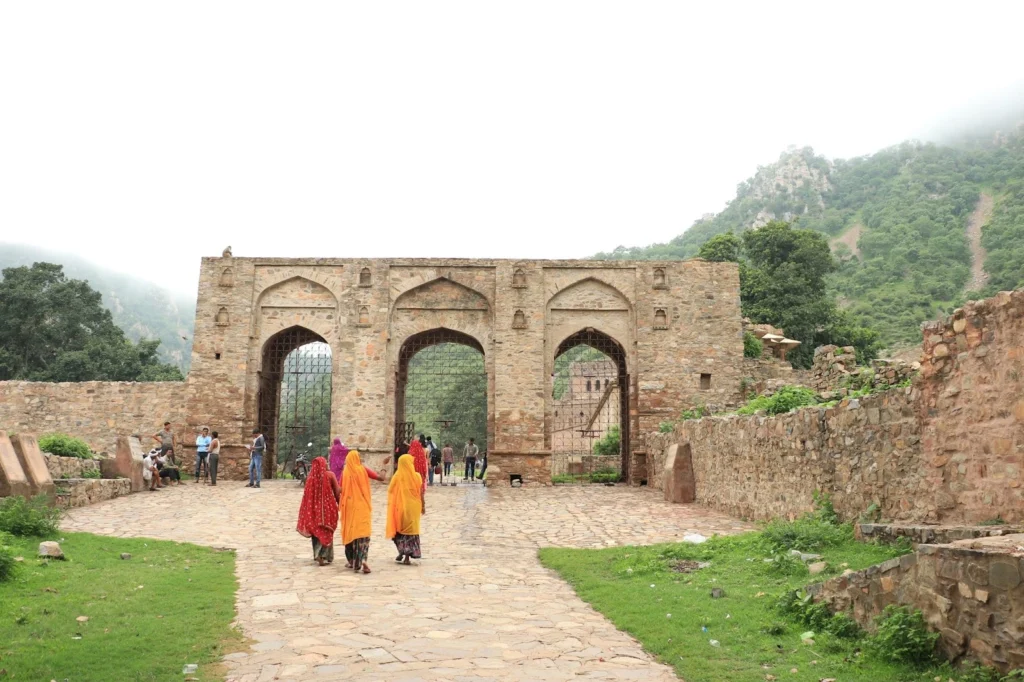
The history of Bhangarh Fort is as captivating as it is eerie. Built in 1573 AD by Raja Bhagwant Das, a ruler of the Kachwaha dynasty of Amber, the fort was gifted to his younger son, Madho Singh, the brother of the famed general Man Singh I, who served in Emperor Akbar’s court.
A Thriving Town under Madho Singh
During the reign of Madho Singh, Bhangarh developed into a well-planned township with grand palaces, temples, mansions, and bustling markets. Surrounded by protective walls and located at the base of the Aravalli Hills, the fort enjoyed both strategic importance and natural beauty. At its peak, Bhangarh was home to over 10,000 people and thrived as a center of trade, culture, and architecture in the region.
The Decline – From Prosperity to Ruin
Despite its prosperity, Bhangarh’s history took a mysterious and tragic turn that blurs the line between historical fact and chilling folklore. According to legend, a powerful sorcerer named Singhia fell in love with Princess Ratnavati, the daughter of Chatr Singh, who later ruled Bhangarh. In an attempt to win her over, he enchanted a bottle of oil with a love spell. However, the princess discovered the trick and threw the bottle onto a nearby rock, which rolled down and fatally crushed the sorcerer.
Before dying, Singhia cursed Bhangarh, declaring that the entire town would be destroyed and never re-inhabited. Shortly afterward, a battle broke out between Bhangarh and the neighboring kingdom of Ajabgarh, leading to massive devastation and the complete abandonment of the fort.
The Curse That Still Echoes
What followed gave rise to the legend that defines Bhangarh Fort’s history today. The site was never resettled, and its structures—once filled with life—remain roofless and abandoned. Locals believe the curse still lingers, casting a haunting presence over the fort’s majestic ruins.
While historians point to warfare and economic collapse as more rational reasons for the town’s downfall, the eerie legend remains deeply tied to the identity of Bhangarh Fort, reinforcing its reputation as one of the most haunted places in India.
From royal glory to ghostly silence, Bhangarh’s history is a compelling blend of fact and folklore that continues to intrigue historians, spiritual seekers, and paranormal enthusiasts alike.
The Haunted Story of Bhangarh Fort
Among all the historical ruins in India, few places stir the imagination quite like Bhangarh Fort. Widely believed to be one of the most haunted sites in the country, the Bhangarh Fort haunted story has become legendary—passed down through generations, whispered by locals, and eagerly sought out by curious travelers.
The Tale of Princess Ratnavati and the Cursed Wizard
At the heart of the Bhangarh Fort haunted legend lies a tragic tale of unrequited love and black magic. According to folklore, a beautiful and intelligent princess named Ratnavati, daughter of Chatr Singh, was admired by many suitors. Among them was a Tantrik (a practitioner of dark magic) named Singhia, who lived nearby.
Knowing he could never win her heart through noble means, Singhia devised a dark plan. He enchanted a vial of perfumed oil with a spell designed to make Ratnavati fall in love with him. But the princess saw through the deception. She threw the bottle onto a large stone, which then rolled down and crushed the sorcerer to death.
With his dying breath, Singhia cursed Bhangarh Fort, damning it to destruction. Not long after, the region fell into chaos. A battle ensued, the royal family perished, and the once-vibrant town was reduced to desolation.
What Locals Say Today
Today, the Bhangarh Fort haunted reputation is deeply embedded in local culture. Villagers living near the site often speak of eerie noises, whispers in the dark, sudden drops in temperature, and ghostly apparitions. Some claim to have heard anklet sounds echoing through the fort’s empty corridors, while others report feelings of being watched or followed after dusk.
The Archaeological Survey of India (ASI) has even posted a warning board at the entrance, prohibiting visitors from entering the fort after sunset—fueling speculation and lending credibility to the Bhangarh Fort story of hauntings and curses.
Whether you believe in spirits or not, there’s no denying the heavy atmosphere that hangs over Bhangarh Fort. Its haunted story continues to draw thrill-seekers and skeptics alike, each hoping to uncover the truth behind Rajasthan’s most ghostly legend.
Bhangarh Fort Horror Stories That Locals Still Whisper
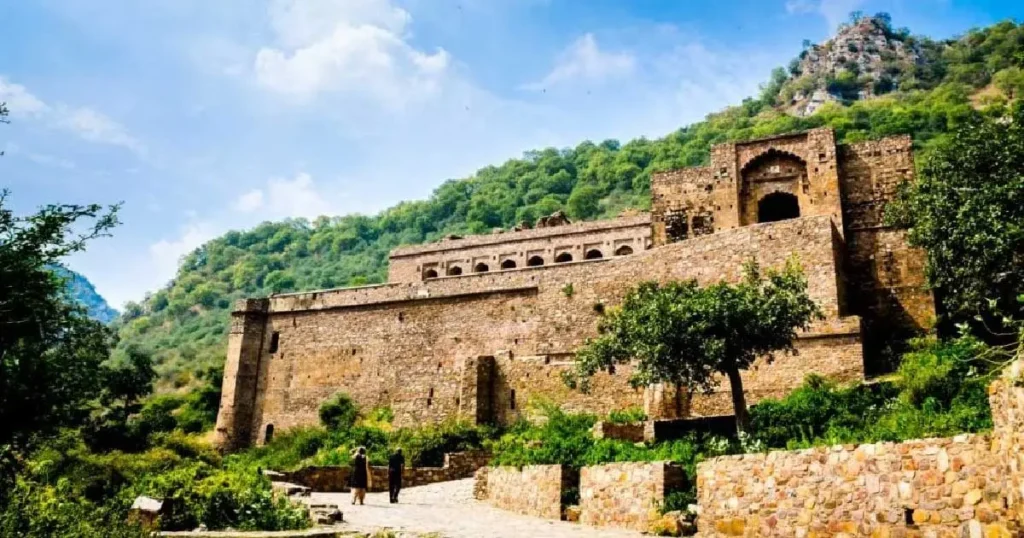
The legends surrounding Bhangarh Fort go beyond just one cursed love story. Over the years, countless eerie tales and unsettling experiences have added layers to the fort’s chilling reputation. From visitors to locals, many have shared spine-tingling accounts that form the basis of the Bhangarh Fort horror story legacy.
The Echoes of Unseen Footsteps
Several travelers claim to have heard the sound of footsteps behind them while exploring the inner chambers of the fort—only to turn around and find no one there. One visitor recalled walking through the temple area when a sudden gust of wind was followed by the soft clinking of anklets, though the space was completely empty.
A Shadow in the Tower
Locals speak of a dark figure often seen near one of the ruined towers just before dusk. A group of friends who ventured close to sunset reported seeing a fleeting shadow disappear into a wall. When they approached, the air turned inexplicably cold, and they immediately felt light-headed and nauseous.
Vanishing Voices After Dark
Another chilling Bhangarh Fort horror story comes from a local guide who once stayed slightly past the allowed time. As he neared the exit, he heard faint conversations and laughter coming from the upper floors of the palace—despite knowing the fort was empty. He ran out, never to stay late again.
The ASI’s Warning: A Sign of Truth?
Perhaps the most compelling validation of these tales is the Archaeological Survey of India’s (ASI) official warning board placed at the fort’s entrance. It clearly states:
“Entering the fort after sunset and before sunrise is strictly prohibited.”
This government-issued restriction has led many to believe that the fort holds secrets best left undisturbed at night. The ASI’s refusal to allow nighttime visits only fuels the belief that the horror stories of Bhangarh Fort aren’t just old village tales—they may have some terrifying truth to them.
Whether these stories are figments of fearful minds or echoes from the past, Bhangarh Fort remains one of the rare places where history and horror intertwine in every whisper carried by the desert wind.
Exploring the Ghost Fort in Rajasthan – What to Expect
Stepping into Bhangarh is like walking into a lost world where silence speaks louder than words. Known widely as the ghost fort in Rajasthan, Bhangarh offers a rare blend of eerie silence and historic grandeur that both intrigues and unsettles visitors.
Architectural Ruins That Tell a Story
As you enter through the main gate—called the Ajmeri Gate—you’ll first pass through a series of ruined structures that once made up a bustling town. Scattered across the complex are roofless homes, empty courtyards, and decaying marketplaces, all whispering tales of a once-prosperous kingdom.
The fort’s interior includes several ancient temples dedicated to Gopinath, Someshwar, Mangla Devi, and Keshav Rai, which are surprisingly well-preserved. These temples showcase stunning carvings and typical Rajput-style architecture that have withstood the test of time.
Further inside, you’ll find the remains of the royal palace, perched on a slightly elevated terrain. Though now in ruins, you can still trace its layout—multi-storied chambers, narrow passageways, and an inner courtyard where the royal family once lived.
A Haunting Yet Majestic Atmosphere
Many tourists describe the experience of visiting Bhangarh as deeply atmospheric. The site is surrounded by the Aravalli Hills on one side and dense forest on the other, adding to its isolated and haunted vibe. Even in broad daylight, the fort has a stillness that makes your footsteps feel unusually loud.
Visitors often report a sense of being watched, strange echoes, and sudden temperature drops in certain areas of the fort. While not everyone encounters paranormal activity, almost all leave with a feeling that Bhangarh is no ordinary ruin—it’s a place where the past still lingers in more ways than one.
Whether you’re a history buff, a paranormal enthusiast, or simply a curious traveler, the ghost fort in Rajasthan promises an unforgettable experience—equal parts historical wonder and haunting mystery.
Is Bhangarh Fort Really Haunted? Myths vs. Reality
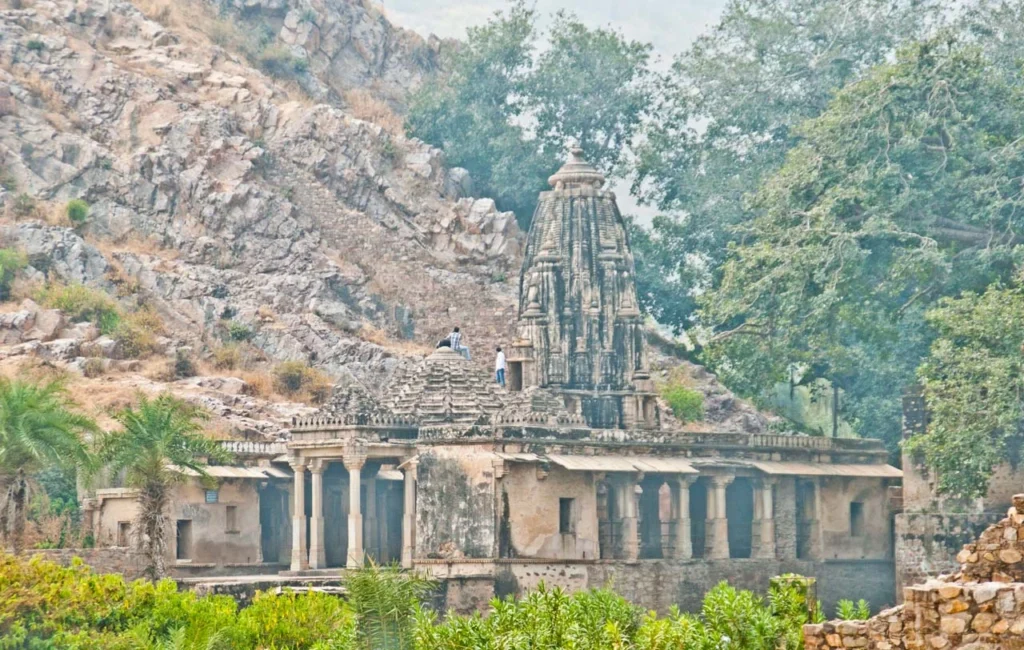
The question that haunts every visitor’s mind—is Bhangarh Fort really haunted, or is it just a centuries-old legend that’s been exaggerated over time? While the tales of black magic, curses, and ghostly sightings are compelling, separating myth from reality requires a closer look at both folklore and factual observations.
The Power of Local Legends
Locals firmly believe that Bhangarh Fort is cursed and haunted. The story of Princess Ratnavati and the Tantrik Singhia has been passed down for generations, with villagers nearby refusing to venture into the area after dark. These beliefs are so deeply ingrained that even today, many people avoid discussing the fort at night, fearing that merely speaking about it can bring misfortune.
Paranormal Investigators and Anecdotal Claims
Several paranormal researchers and YouTubers have visited Bhangarh Fort to document potential supernatural activity. While some claim to have experienced temperature drops, unusual energy shifts, and faint whispers on recording devices, none of these findings have been verified scientifically. Most evidence remains anecdotal and open to interpretation.
Visitors often describe feeling uneasy, watched, or momentarily disoriented within the fort’s ruins. However, these sensations may also be triggered by the fort’s isolation, silence, and the powerful influence of expectation and suggestion.
Scientific Viewpoint
From a scientific standpoint, there is no concrete proof that Bhangarh Fort is haunted. Historians and archaeologists suggest more practical explanations for the town’s downfall—such as water scarcity, warfare, or political decline. Psychologists argue that the power of storytelling, combined with environmental cues like darkness, silence, and isolation, can easily create a sense of fear and hallucination.
The Archaeological Survey of India’s (ASI) ban on entry after sunset is based more on safety concerns than superstition. The area becomes dangerous to navigate after dark due to its uneven terrain, wildlife presence, and lack of lighting—not necessarily because of ghosts.
The Verdict
So, is Bhangarh Fort really haunted? The answer lies somewhere between belief and skepticism. While there’s no scientific proof of paranormal activity, the emotional and psychological impact of the fort is undeniable. The chilling legends, combined with the stark silence of the ruins, create an atmosphere that feels charged—whether by spirits or by centuries of storytelling.
For those exploring Rajasthan through a Golden Triangle Tour, Bhangarh offers a unique detour into the realm of the mysterious and unexplained. It’s a destination that adds a spine-tingling twist to the otherwise royal and cultural experience.
And if you’re blending your historical exploration with wildlife adventure, a Golden Triangle Tour With Ranthambore brings you even closer to the wild heart of Rajasthan—both in nature and in folklore.
In the end, Bhangarh Fort continues to straddle the fine line between myth and mystery, captivating believers and doubters alike.
Travel Guide – How to Reach Bhangarh Fort & Tips for Visitors
Planning a trip to the infamous Bhangarh Fort? While its haunted reputation draws most of the attention, it’s also a fascinating destination for history lovers and curious travelers alike. Here’s everything you need to know before visiting this mysterious fort in Rajasthan.
How to Reach Bhangarh Fort
Bhangarh is located in the Alwar district of Rajasthan, near the Sariska Tiger Reserve.
- By Road:
- From Jaipur: Approximately 85 km (2–2.5 hours by car)
- From Delhi: Around 270 km (5–6 hours via NH48)
- You can hire a taxi or drive yourself via Alwar–Thanagazi Road.
- From Jaipur: Approximately 85 km (2–2.5 hours by car)
- By Train:
- The nearest railway station is Dausa Railway Station, about 30 km from the fort.
- The nearest railway station is Dausa Railway Station, about 30 km from the fort.
- By Air:
- The closest airport is Jaipur International Airport, roughly 90 km away.
- The closest airport is Jaipur International Airport, roughly 90 km away.
Best Time to Visit
The ideal time to visit Bhangarh Fort is during the winter and spring months (October to February). The weather is pleasant, making it easier to explore the ruins during the day. Summers can be extremely hot, while monsoons may make the terrain slippery and unsafe.
What to Carry
- Water bottles and light snacks (there are no eateries inside the fort)
- Comfortable walking shoes (expect uneven stone paths and steps)
- Sunscreen, hat, and sunglasses for sun protection
- Camera or smartphone to capture the eerie yet majestic architecture
- Flashlight, especially if you’re staying until late afternoon (though staying after sunset is prohibited)
Entry Rules & Important Guidelines
- Timings: Open daily from 6:00 AM to 6:00 PM
- Entry Fee: Free for all visitors
- ASI Regulation:
- No entry is allowed after sunset or before sunrise.
- A signboard by the Archaeological Survey of India (ASI) clearly warns visitors of this rule, citing safety reasons.
- Overnight stays inside the fort are strictly prohibited.
- No entry is allowed after sunset or before sunrise.
- Behavior: Respect the site by not vandalizing or littering. Avoid venturing into closed or unsafe structures.
Whether you’re visiting for the haunted stories or the historical ruins, this travel guide ensures you’re well-prepared for your journey to Bhangarh Fort—a destination that blends mystery, history, and adventure like no other.
Final Thoughts: Why Bhangarh Still Captivates Curious Travelers
Bhangarh Fort is more than just stone walls and silent ruins—it’s a place where history and legend blur, where every step through its deserted pathways feels like a walk through time. The haunting tale of Princess Ratnavati, the mysterious curse, and the eerie stillness that surrounds the fort have transformed it into a destination unlike any other in India.
For history buffs, it offers a glimpse into 16th-century Rajput architecture and the forgotten glory of a once-flourishing town. For thrill-seekers, it presents a chance to confront the unknown—to stand in a place whispered to be cursed, where stories are etched not just into the walls, but into the very air itself.
Even without any confirmed supernatural encounters, the mystique of Bhangarh Fort lingers long after you leave. It’s not just what you see, but what you feel—the weight of silence, the chill in the breeze, and the whispers of a past that refuses to fade.
If you’re planning a spiritual or cultural escape across North India, adding Bhangarh to a Golden Triangle Tour with Rishikesh can create a perfect blend of mysticism and serenity. Alternatively, the Golden Triangle Tour with Varanasi offers a deep dive into India’s sacred traditions while letting you explore places steeped in legend like Bhangarh.
For a more immersive royal experience, the Best Rajasthan Tour Package allows you to explore forts, palaces, and desert secrets—including Bhangarh—across the majestic state.

